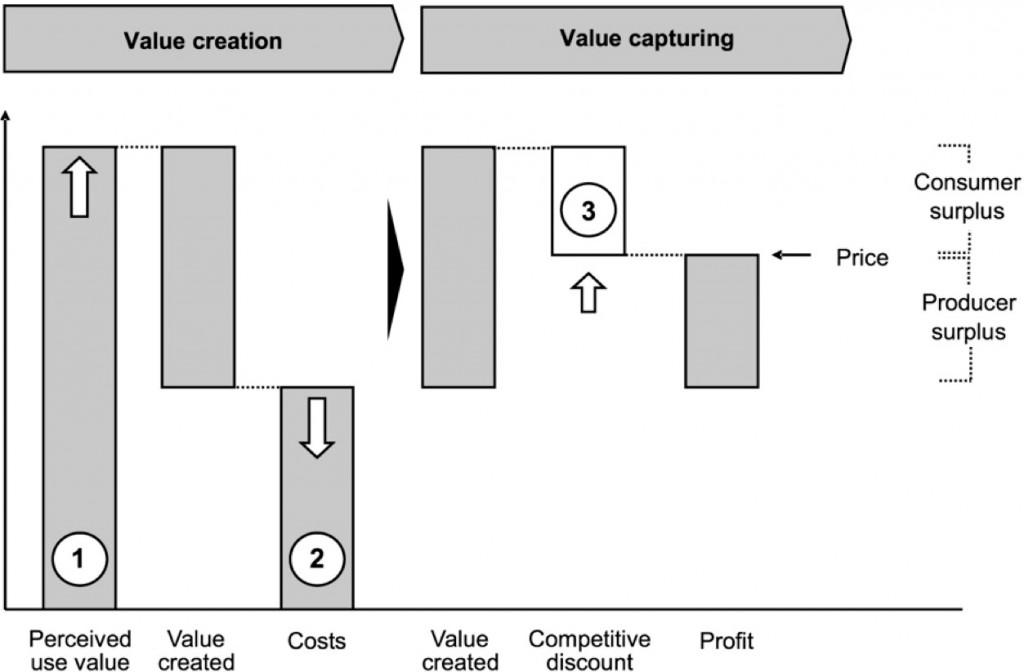I recently attended a leadership workshop hosted by the Legal Marketing Association on behalf of its current and incoming chapter and international volunteer board leaders. Beth Ruske, managing partner of Tiara International LLC and co-founder of ClearSpace LLC, spoke to the group about producing results as a True Leader, with particular emphasis on improving results through language. Beth’s remarks were adapted from the work of Fernando Flores’ “The Effect of Communication.” I found Beth's presentation fascinating. I searched for more background afterward and discovered some excellent insights about Flores’ work from Matthew Budd and Larry Rothstein in their “You Are What You Say.” I’ve summarized some key takeaways here.
Flores believes there’s a fundamental connection between language and actions, and what we say strongly influences how we feel and how others around us feel. Language used effectively can overcome challenges and biases, change moods and physiology, create positive outlooks and ambition. Used poorly, language can have long-reaching and long-lasting negative effects, to ourselves and others. Without delving into the psychological aspects of Flores’ work, it’s safe to say that many of us fall short of effective communication because our language is imprecise – what we say is not what others hear, and vice versa.
Flores identified several “linguistic viruses” that infiltrate our daily speech, creating confusion rather than clarity, impeding collaboration and causing frustration. By better understanding the common mistakes we make when communicating with others, leaders can improve their effectiveness in establishing a vision and creating momentum toward achieving the vision.
Here then, are the top 10 language viruses. Some refer to more precise language; others refer to better communication in sticky but predictable situations.
1. NOT MAKING REQUESTS
We want or need something from someone else, but we don't ask for it. Why? For some of us, this fear of asking is to avoid feeling rejected. In sales training parlance, overcoming “call reluctance” involves understanding that a no to a request is just that -- a no to the requested action, not a rejection of the person.
Others fail to ask for fear that others will deem them incompetent. Anyone who has presented to a group of lawyers on a topic out of the lawyers' comfort zone knows that they will generally not ask questions if subordinates are in the room, or if the answer might be so obvious as simply asking might make the lawyers look silly. In reality, those with true comfort in their position often have no fear of asking questions.
And others fail to make requests because they fear imposing on others. In fact, many people thrive on helping others and being asked to contribute is a high form of flattery as it acknowledges another’s capabilities.
2. LIVING WITH UNCOMMUNICATED EXPECTATIONS
Countless cartoons have played out this theme, where one spouse has an entire two-sided argument in his or her head while the other spouse is blissfully unaware. Whether at home or at the office, sooner or later we all feel that someone else “should have known” what we wanted, or we’re faced with someone taking us to task for not taking some action that was obviously needed.
This variation of "not requesting" happens when someone has a vision for what others should do, but doesn’t express this thought as a request. Inevitably, when others don't do what we expect, we're disappointed, resentful and angry.
3. MAKING UNCLEAR REQUESTS
Imagine the basketball coach exhorting his players to “help out on defense” when facing a superior team. Does this mean I should leave my opponent open while I double-team another opponent? Does this mean I should guard the opponent closest to me, expecting one of my teammates to switch and cover my assigned opponent? Coaches know that vague advice leads to poor play, so good coaches give specific guidelines on playing help defense.
Many requests at home or at the office rely on vague language. There’s as much wiggle room when asking a teen to “be home at a reasonable hour” as there is when asking a colleague to “take a look at this and let me know what you think.”
Asking very specific questions is not insulting because it allows both to have a shared vision of the expected outcome. It’s not enough to have the desired outcome in our own minds; we must express this outcome to others so they share the vision. Beth offered some excellent advice to guide us: Every request should include some form of “will you…” and “by when” to ensure clarity on what is requested and when it’s due.
4. NOT OBSERVING THE MOOD OF YOUR REQUESTS
Our demeanor when asking questions shapes the outcome. If every request is a command, subordinates will be compelled to complete the request but they are unlikely to go the extra mile. Others who are not required to act may choose not to when faced with a demanding and commanding request style.
By contrast, pleading desperately for help is unlikely to foster the desired outcome long-term. Many will help you once, even twice, but obtaining help from others out of a sense of guilt is not sustainable. This is, incidentally, why charities see a steep drop off from contributors who become weary of incessant solicitations.
Be aware of your demeanor, and the recipient’s, when asking. The old adage still applies: you will catch more flies with honey than with vinegar.
5. PROMISING EVEN WHEN YOU AREN'T CLEAR WHAT WAS REQUESTED
In the hierarchical structure of a law firm, when a partner requests something of an associate or staff member, there is little room for saying no. Unfortunately, at times there is also little room for requesting clarification. It’s the responsibility of the receiving party to clarify when the request is vague. Clarifying an outcome that is unclear is not a sign of weakness. In fact, it’s a sign of thoroughness and attention to detail.
6. NOT DECLINING REQUESTS
This is easy to explain. We can’t accept every request lest we become overburdened and ineffective. Many say yes for fear that saying no will disappoint the requester. But imagine the requester who is disappointed with an insufficient outcome, or an outcome that comes too late to be helpful. Avoid this disappointment by not over-promising and under-delivering.
7. BREAKING PROMISES WITHOUT TAKING CARE: UNDERMINING TRUST
It’s unfortunately not uncommon for some who are extraordinarily overburdened to put their heads in the sand and hope deadlines go away. Not surprisingly this rarely works! But hiding from responsibility takes many forms, it’s not always as obvious as shirking responsibility.
A common complaint from in-house counsel is that outside counsel aren’t responsive. Outside counsel may feel this is unjust, as they are working dutifully on the client’s matter but don’t yet have “the answer.” To clients, managing expectations is about communicating progress, confirming that we’re on track for established deadlines and providing early warning when something goes awry. What frustrates clients more than anything is surprise. If lawyers were to give advance warning when the matter is trending over budget or some new uncertainty has occurred, the client can adjust plans beforehand. Adjusting after the fact is always much more challenging.
When commitments need to be broken, it’s critical to be up front and open, apologize for the impact, offer a new commitment and help fix any mess that results. It is fairly uncommon for those who break commitments to do so elegantly, so handling the situation with care can still be a positive differentiator.
8. TREATING OPINIONS OR ASSESSMENTS AS FACTS
As I write this during a presidential election season, my voice mail and email inbox and Facebook wall are full of political ads, commentary, solicitations and diatribes. In politics and in religion, many have an absolute conviction in their beliefs but are unable to objectively quantify and prove to others the merits of their position. This is a desirable outcome of a free society, notwithstanding the noise pollution in election years.
However, imagine the same mindset applied to more mundane business or family issues. When one is convinced an opinion is fact, it can create dissension. “We must double down and invest more in this product if we want to win in the market” and “What we need more than anything else is more rainmakers” and “I believe we spend too much already so I’m going to vote no on this funding proposal” and “Our clients want more of X, not Y” and countless other conversations take place every day in businesses and law firms. When held up to scrutiny, many assertions lack a factual basis, but strength of will or organizational authority can often overcome lack of facts.
But that doesn’t make it right. As we’ve learned in politics, you may not be able to convince others they’re wrong. But we can do a better job of ensuring that our views are grounded in fact, not opinion.
9. MAKING ASSESSMENTS WITHOUT RIGOROUS GROUNDING
Not all judgments can be supported by incontrovertible facts. Still, there should be a certain rigor applied in making a case even when some of the facts are missing or in dispute. Evidence and supporting documentation are always more helpful than mere opinion.
I recall a new CEO sitting through a review of our company’s technology spending. We had spent five years investing in significant technology upgrades that automated multiple manual systems, improved quality and increased logistical supply chain throughput. We had substantially reduced overall operating expenses and improved profits through strategic technology investments. The new CEO spent just a few minutes reviewing the coming year budget submission before opining, “It feels like we spend too much on technology. I think companies this size should spend less. Please take another pass at the budget and reduce the spend considerably.”
We would have welcomed benchmark studies that put our technology spending in context. We would have welcomed a healthy debate on the substantial improvements we had made, which perhaps to a more seasoned eye should have resulted in even greater profits. What we didn’t welcome was a poorly supported argument that impaired the new CEO’s credibility. And once credibility is lost, it’s hard to regain.
10. MAKING FANTASY AFFIRMATIONS AND DECLARATIONS
I’ve spent a lot of time in law firm practice group retreats discussing business development strategy. I’ve never characterized them as fantasy, but I’m quite familiar with the unreasonable, unsupported and improbable declarations that mark such occasions: “We will grow the practice by 25% next year by bringing in new clients and getting more work with existing clients.” Flores treats such assertions as fantasies when the goal itself is unreasonable and there is not even a vague plan to achieve it. The outcome won’t produce itself.
Contrast the fantasy with a realistic declaration, perhaps a reality that doesn’t yet exist but is attainable through a series of reasonable steps. It’s a bit distant now, but the assertion in 1962 by President John F. Kennedy that the US would put a man on the moon by the end of the decade was grounded in the country’s then-current science and technological capabilities, even though to the average observer it seemed outlandish. As such, it may have been a stretch goal but it certainly wasn’t fantasy.
Timothy B. Corcoran delivers keynote presentations and conducts workshops to help lawyers, in-house counsel and legal service providers profit in a time of great change. To inquire about his services, contact him at +1.609.557.7311 or at tim@corcoranconsultinggroup.com.






